After one week the harvested garlic was ready for a trim. I cut the tops off to about 8 inches on all except the European porcelain.
These were not quite as ripe and the tops were still quite green compared to the others.
I kept a few of the bulbil tops just in case.
These are the teeny tiny ones from the Porcelain type.
Since there were a few head that were a bit loose and when that happens it seems sow bugs find their way into the heads. I brought several into the house to be used soon.
I also decided a batch of melted garlic was in order, so proceeded to do that. Here is the procedure from a Facebook note.
This will likely be a rather disorganized series of "musings", which may get better as we move along. The mundane "goings on" sometimes need to be addressed.
Monday, August 12, 2013
Wednesday, August 7, 2013
Garlic Harvest 2013
The first week of August seems to be the time garlic gets harvested. The date doesn't vary much from one year to the other. Monday of this week was the day. The garlic seemed to do a bit better than some years. Trying to figure out what made the difference may be difficult. My opinion is the application of eel-grass as a mulch in the fall. It was the first time we had access to that marvelous amendment. It obviously gave a nice protective layer for winter, but also prevented any significant weed growth throughout the growing season. We also had no great periods without some rain.
There were just shy of 240 cloves planted last October. All were hard neck varieties of various names and sources. I had removed the majority of the scapes a few weeks ago, but I don't think I can say whether those with scapes left on were any poorer than those with the scapes removed.
I didn't do much with this basket full of scapes except to make an experimental batch of garlic scape pesto. I don't think I am overly thrilled with it.
Every row would have a few heads that were a bit punier than others. anyway. The maturation of the scapes is also an indication that the heads below are ready for harvest. I doubt we will bother planting any of the little bulblets from the scapes, but you never know. It is quite a lengthy procedure and I seem to lose track before the heads get to a significant size.
The overall best performer would have to be the European Porcelain we obtained from the folks at Landsdowne Horse Logging in Pictou County. We met Corey and Justin Smith at the Garden Club Fall Rally , 2012.
The plants and harvested heads were beautifully robust. They were also the least ripe of any, so they could conceivably have been left a few days, at least this year.
I am always concerned lest I leave them a bit too long and get rewarded with splitting heads. This year almost all were just right. There may have been three or four heads that were a little loose, but that was all.
I love the garlic harvest. The soil in the bed is a delight to work in. The slight loosening along the row is all that is required to lift the heads.
Other years I have given the freshly lifted heads a bit of a wash, but chose not to do that this year.
We also have a different spot to dry and cure the heads. Our tent-like shelter is still up over the picnic table, so this was the spot of choice. It is as airy as anywhere and no sun gets to the table.
I set up mesh trays mounted on other mesh tray so air circulates all around. This also prevents any sowbugs or other creatures from settling in.
Every day I rearrange the heads a bit, but I don't think they are crowded.
The first wheelbarrow load consisted of a variety that I have no name for, but seems to be a common one grown here in Antigonish County. These were obtained from Isabel Rochas who operates LaFrayere Garden in Georgeville.
The second batch were from Jack MacLoed who grows many vegetables and tree fruits in Lanark. He sells his produce at the Antigonish Farmer's Market each week of the season. I am pretty sure the varieties from both these places are the same.
I had also planted a couple of varieties from Botanus last fall. Music and German White. Music is quite a common variety and the small row did okay.
The German White was alright, but not nearly as nice as the European Porcelain.
Each year after the garlic is harvested we plant a cover crop of buckwheat on the patch. Bill was pretty swift getting at that job and had the bed smoothed out before the last row was even harvested. Part of the seaweed was raked aside for another use.
The picnic table was completely full by the time I was finished.
Ringo loves to lounge there, so was a wee bit put out (or perhaps I just imagined that!). Grace always helps.
There were just shy of 240 cloves planted last October. All were hard neck varieties of various names and sources. I had removed the majority of the scapes a few weeks ago, but I don't think I can say whether those with scapes left on were any poorer than those with the scapes removed.
I didn't do much with this basket full of scapes except to make an experimental batch of garlic scape pesto. I don't think I am overly thrilled with it.
Every row would have a few heads that were a bit punier than others. anyway. The maturation of the scapes is also an indication that the heads below are ready for harvest. I doubt we will bother planting any of the little bulblets from the scapes, but you never know. It is quite a lengthy procedure and I seem to lose track before the heads get to a significant size.
The overall best performer would have to be the European Porcelain we obtained from the folks at Landsdowne Horse Logging in Pictou County. We met Corey and Justin Smith at the Garden Club Fall Rally , 2012.
The plants and harvested heads were beautifully robust. They were also the least ripe of any, so they could conceivably have been left a few days, at least this year.
I am always concerned lest I leave them a bit too long and get rewarded with splitting heads. This year almost all were just right. There may have been three or four heads that were a little loose, but that was all.
I love the garlic harvest. The soil in the bed is a delight to work in. The slight loosening along the row is all that is required to lift the heads.
Other years I have given the freshly lifted heads a bit of a wash, but chose not to do that this year.
We also have a different spot to dry and cure the heads. Our tent-like shelter is still up over the picnic table, so this was the spot of choice. It is as airy as anywhere and no sun gets to the table.
I set up mesh trays mounted on other mesh tray so air circulates all around. This also prevents any sowbugs or other creatures from settling in.
Every day I rearrange the heads a bit, but I don't think they are crowded.
The first wheelbarrow load consisted of a variety that I have no name for, but seems to be a common one grown here in Antigonish County. These were obtained from Isabel Rochas who operates LaFrayere Garden in Georgeville.
The second batch were from Jack MacLoed who grows many vegetables and tree fruits in Lanark. He sells his produce at the Antigonish Farmer's Market each week of the season. I am pretty sure the varieties from both these places are the same.
I had also planted a couple of varieties from Botanus last fall. Music and German White. Music is quite a common variety and the small row did okay.
The German White was alright, but not nearly as nice as the European Porcelain.
Each year after the garlic is harvested we plant a cover crop of buckwheat on the patch. Bill was pretty swift getting at that job and had the bed smoothed out before the last row was even harvested. Part of the seaweed was raked aside for another use.
The picnic table was completely full by the time I was finished.
Ringo loves to lounge there, so was a wee bit put out (or perhaps I just imagined that!). Grace always helps.
Thursday, August 1, 2013
Summer is zooming by
August 1st has arrived and that means we are getting dangerously close to summer's end.
Day lily season is in progress and we have been enjoying our own selections plus those of a couple of other day lily aficionados.
Here is a link to some of our day lily varieties
Last Saturday we had a pleasant visit to Truro to visit Pheasant Gardens. Cecil and Lillian Dunlap have a lovely range of plants, many of which they have for sale via their website. Cecil visited our June Garden Club meeting and left behind a sample of Night Beacon for everyone.
Ours is in bloom this week.
Bill and I went up to Arisaig Tuesday and had a tour of Dave Runnalls' Day Lily garden. He has over 400 varieties and they were in glorious form.
Needless to say there were a few samples which are bound to get on a wishlist for next year.
One named 'JT Davis' is reminiscent of lemon pie.
We picked a nice bunch of Sugar Lace Peas today along with the first cucumber. Beans are almost ready, so we hope the deer do not make a return run. There were some fresh tracks out near the pole beans. That is the first we have noticed since very early spring.
Today was partly spent installing a new refrigerator and all that that entails. I guess it will take a few days to figure out the best distribution there.
Day lily season is in progress and we have been enjoying our own selections plus those of a couple of other day lily aficionados.
Here is a link to some of our day lily varieties
Last Saturday we had a pleasant visit to Truro to visit Pheasant Gardens. Cecil and Lillian Dunlap have a lovely range of plants, many of which they have for sale via their website. Cecil visited our June Garden Club meeting and left behind a sample of Night Beacon for everyone.
Ours is in bloom this week.
Bill and I went up to Arisaig Tuesday and had a tour of Dave Runnalls' Day Lily garden. He has over 400 varieties and they were in glorious form.
Needless to say there were a few samples which are bound to get on a wishlist for next year.
One named 'JT Davis' is reminiscent of lemon pie.
We picked a nice bunch of Sugar Lace Peas today along with the first cucumber. Beans are almost ready, so we hope the deer do not make a return run. There were some fresh tracks out near the pole beans. That is the first we have noticed since very early spring.
Today was partly spent installing a new refrigerator and all that that entails. I guess it will take a few days to figure out the best distribution there.
Friday, April 26, 2013
Spring Evening April 25
We had a lovely working day with lots of sunshine and warm temperatures. A bit more spring clean-up was accomplished and even a few items potted up for our upcoming Plant Sale (May 18th and 19th). Grace and I had a little walk around the front yard to admire the Glory of the Snow and other things.
I subsequently stumbled upon the Movie Maker in Windows Live and had a little play with today's pictures. Come share the walk. If the video doesn't start here, click on the YouTube button.
I subsequently stumbled upon the Movie Maker in Windows Live and had a little play with today's pictures. Come share the walk. If the video doesn't start here, click on the YouTube button.
Monday, April 8, 2013
Begonia grandis Adventures
Begonia grandis is one of our favorite plants. It is , in some ways, similar to other tuberous begonias, but has some distinctions. the tubers are very dense and never get quite as large as regular begonias. They need to be planted significantly deeper than typical begonias and are also much hardier. In a zone 6b-7 climate, they could likely be left in the ground over the winter. Even here we have had little volunteers come up , either from tubers left in the ground or bulbils that have "seeded" off. In our area they are best stored indoors overwinter in a dark, cool dry area.
They get "potted up" about mid-April each year for the next years growth.
They are beautiful foliage plants that prosper both in planters or in ground. It would seem I don't have a nice image of the lovely deep red underside of the leaves. They are much sturdier than regular tuberous begonias, so withstand the rigors of weather a bit better.
They bloom late in the season and continue to be beautiful until a hard frost. we often dig them before that hard frost has happened.
Our supply of B. grandis started off with only one or two little tubers that Bill got from Cruikshanks back in the day. There has been quite a bit of multiplication, so we now have many.
About 2004, we discovered a very large number of little bulbils on the plants leaf axils when we were harvesting the tubers in late fall. We decided to see if they could be grown.
The little bulbils were "sown" in medium and kept just slightly damp for a few weeks. Expecting they would typically get a cold period, we packed the packs in plastic and put them in the fridge for the winter.
The packs were brought out in early spring, put under lights and in a short time little sprouts appeared. These grew into small tuberous plants which made significant growth by the end of that summer.
They were harvested and stored the same as the bigger tubers and the next year, were blooming size.
Last fall (2012) there were an inordinate number of bulbils formed, so I thought I would save some and list them in the ARHS Seed Exchange. The many bulbils were put in three packs of mix and treated as before. Some were shipped off packed in a bit of medium for orders received. Many were left and the packs were taken from the fridge March 14th. Growth started to appear about two weeks later.
They have grown very fast and were transplanted to 4-cell packs April 8th.
This is the storage pack popped out to show the roots profile before separating them into individual little plants.
They were very easy to handle and came apart with very little apparent disturbance.
It would appear there are sixteen packs plus a couple of small packs with some tiny remnants.
That prompted me to check the stored tubers from last year which were in the cold room in a box. All were showing a small sprout, so they will need to be potted up in a few days.
I usually put the larger tubers in 3" pots, the medium ones in a propagating tray and the tiny ones in 4-cell packs. They get planted with the sprout just showing, but with room for them to have a greater amount of mix added to increase their planting depth. They are put about 5-6 " deep when planted outside.
We try get some sold at our annual Plant Sale, many are planted , and some are just given to friends or neighbors. Being a rather unknown plant, it takes some degree of public relations.
A bit of an update from late April. The little plants have grown beautifully.
Even the two packs with so-called scraps are full of growth.
If anything, we may have too many of these lovely plants. I have kept a count (more or less) and there are from the old tubers thirty six 3" pots, two trays with 24 per tray and sixteen 4-cell packs (56). Add in the ~64 little guys and it gives a large number.
I have been trying to find out if there are other sources for B. grandis here in Canada, but haven't found any. Several places in the United States list them and there are one or two seed sources.
They are beautiful foliage plants that prosper both in planters or in ground. It would seem I don't have a nice image of the lovely deep red underside of the leaves. They are much sturdier than regular tuberous begonias, so withstand the rigors of weather a bit better.
They bloom late in the season and continue to be beautiful until a hard frost. we often dig them before that hard frost has happened.
Our supply of B. grandis started off with only one or two little tubers that Bill got from Cruikshanks back in the day. There has been quite a bit of multiplication, so we now have many.
About 2004, we discovered a very large number of little bulbils on the plants leaf axils when we were harvesting the tubers in late fall. We decided to see if they could be grown.
The little bulbils were "sown" in medium and kept just slightly damp for a few weeks. Expecting they would typically get a cold period, we packed the packs in plastic and put them in the fridge for the winter.
The packs were brought out in early spring, put under lights and in a short time little sprouts appeared. These grew into small tuberous plants which made significant growth by the end of that summer.
They were harvested and stored the same as the bigger tubers and the next year, were blooming size.
Last fall (2012) there were an inordinate number of bulbils formed, so I thought I would save some and list them in the ARHS Seed Exchange. The many bulbils were put in three packs of mix and treated as before. Some were shipped off packed in a bit of medium for orders received. Many were left and the packs were taken from the fridge March 14th. Growth started to appear about two weeks later.
They have grown very fast and were transplanted to 4-cell packs April 8th.
This is the storage pack popped out to show the roots profile before separating them into individual little plants.
They were very easy to handle and came apart with very little apparent disturbance.
It would appear there are sixteen packs plus a couple of small packs with some tiny remnants.
That prompted me to check the stored tubers from last year which were in the cold room in a box. All were showing a small sprout, so they will need to be potted up in a few days.
I usually put the larger tubers in 3" pots, the medium ones in a propagating tray and the tiny ones in 4-cell packs. They get planted with the sprout just showing, but with room for them to have a greater amount of mix added to increase their planting depth. They are put about 5-6 " deep when planted outside.
A bit of an update from late April. The little plants have grown beautifully.
Even the two packs with so-called scraps are full of growth.
If anything, we may have too many of these lovely plants. I have kept a count (more or less) and there are from the old tubers thirty six 3" pots, two trays with 24 per tray and sixteen 4-cell packs (56). Add in the ~64 little guys and it gives a large number.
I have been trying to find out if there are other sources for B. grandis here in Canada, but haven't found any. Several places in the United States list them and there are one or two seed sources.
Thursday, March 14, 2013
March has a hint of spring
We go through each winter with the countdown to spring being a frequent musing.
The last few days saw lots of snow disappear and made the possibility of a reasonably easy walk possible.
This seemed to be the day for other spring pursuits, as I finally started some seeds. We were given some Blue Poppies and Delphiniums last week at the ARHS meeting, so felt compelled to start them. There were also a few items from the ARHS Seed Exchange list I wanted to try. The old Planting Calendar got updated and ready for 2013 entries. This is a snippet of the page. This planting calendar has been the mainstay of my record keeping for many years. Each year I add a new page for the current entries. We have a similar file that is used for Rhododendron and Azalea plantings.
The day had some nice springy items in store, even though we know it will likely stay cold and perhaps snow again. The snowdrops waste no time popping up.
A similar phenomenon was happening in a spot in the Beech bed. Crocus shoots emerging even as snow lies adjacent.
The dogs were very keen on the walk, even if they had to mush through quite a bit of snow. The rhododendrons way back in the hollow were still pretty surrounded.
Grace made a lot of turns and needed a small break.
The purpose of the walk down those rather "slippery slopes" was to see if the witch hazel was in bloom. We were not disappointed. Loads of bloom and a lovely fragrance , which seems quite shocking this time of year.
The little blooms were beautiful against the bright sky.
Bill had a walk also and announced that it appeared there was not much apparent damage to small plants out back, and that the Tree Peonies looked very happy.
This pic is of an actual bud on our "Blue Heaven" rhodies. This will be the first year they bloom at the ripe old age of 12 years.
Other than knowing we will likely have a period of muddiness here and there, it is nice to see these definite signs of spring.
The last few days saw lots of snow disappear and made the possibility of a reasonably easy walk possible.
This seemed to be the day for other spring pursuits, as I finally started some seeds. We were given some Blue Poppies and Delphiniums last week at the ARHS meeting, so felt compelled to start them. There were also a few items from the ARHS Seed Exchange list I wanted to try. The old Planting Calendar got updated and ready for 2013 entries. This is a snippet of the page. This planting calendar has been the mainstay of my record keeping for many years. Each year I add a new page for the current entries. We have a similar file that is used for Rhododendron and Azalea plantings.
The day had some nice springy items in store, even though we know it will likely stay cold and perhaps snow again. The snowdrops waste no time popping up.
The dogs were very keen on the walk, even if they had to mush through quite a bit of snow. The rhododendrons way back in the hollow were still pretty surrounded.
Grace made a lot of turns and needed a small break.
The purpose of the walk down those rather "slippery slopes" was to see if the witch hazel was in bloom. We were not disappointed. Loads of bloom and a lovely fragrance , which seems quite shocking this time of year.
The little blooms were beautiful against the bright sky.
Bill had a walk also and announced that it appeared there was not much apparent damage to small plants out back, and that the Tree Peonies looked very happy.
This pic is of an actual bud on our "Blue Heaven" rhodies. This will be the first year they bloom at the ripe old age of 12 years.
Other than knowing we will likely have a period of muddiness here and there, it is nice to see these definite signs of spring.
Subscribe to:
Comments (Atom)

_zps74861206.jpg)
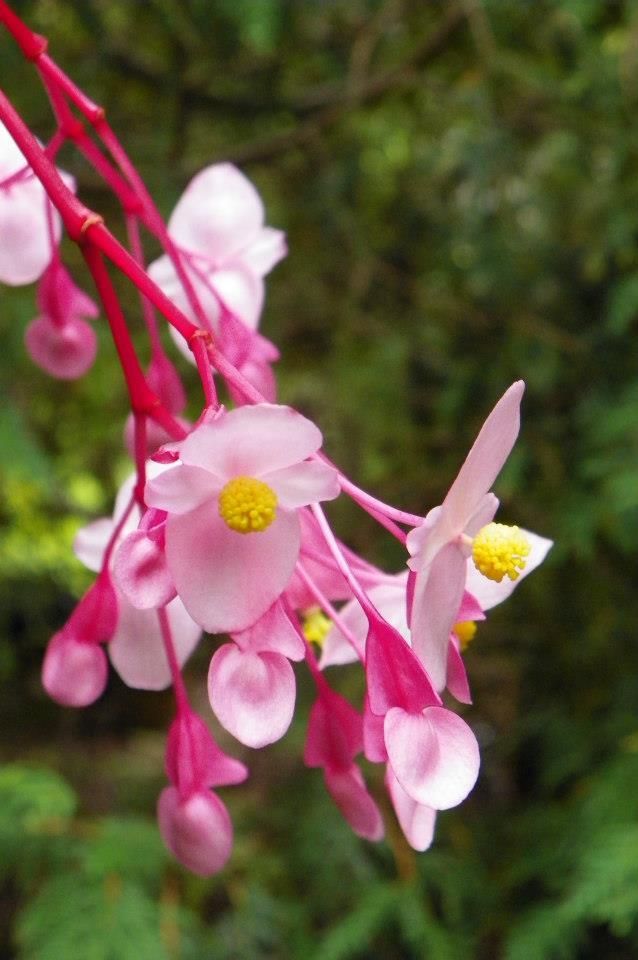
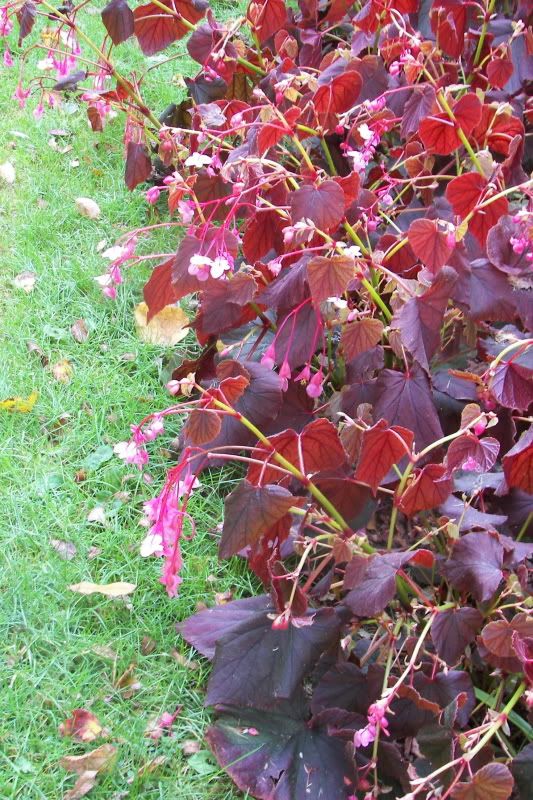
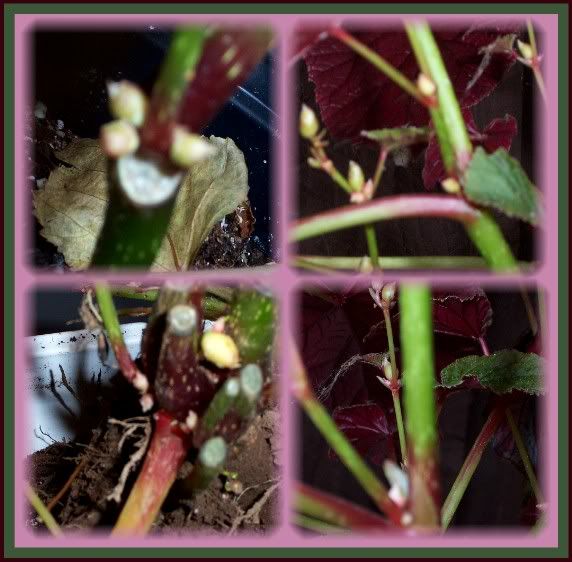
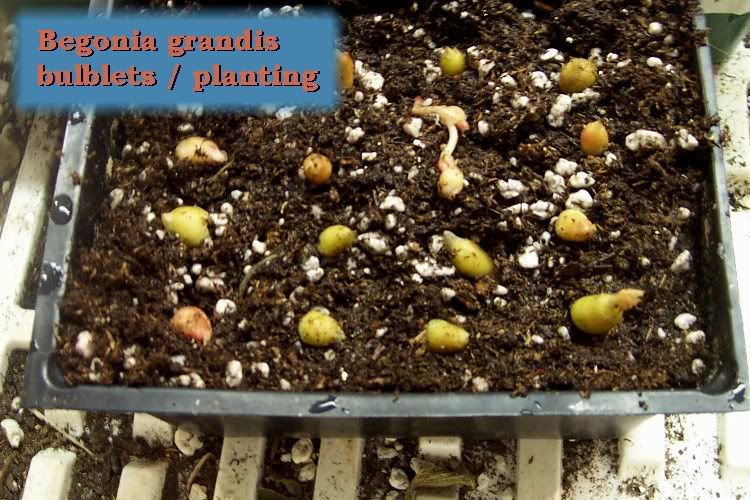



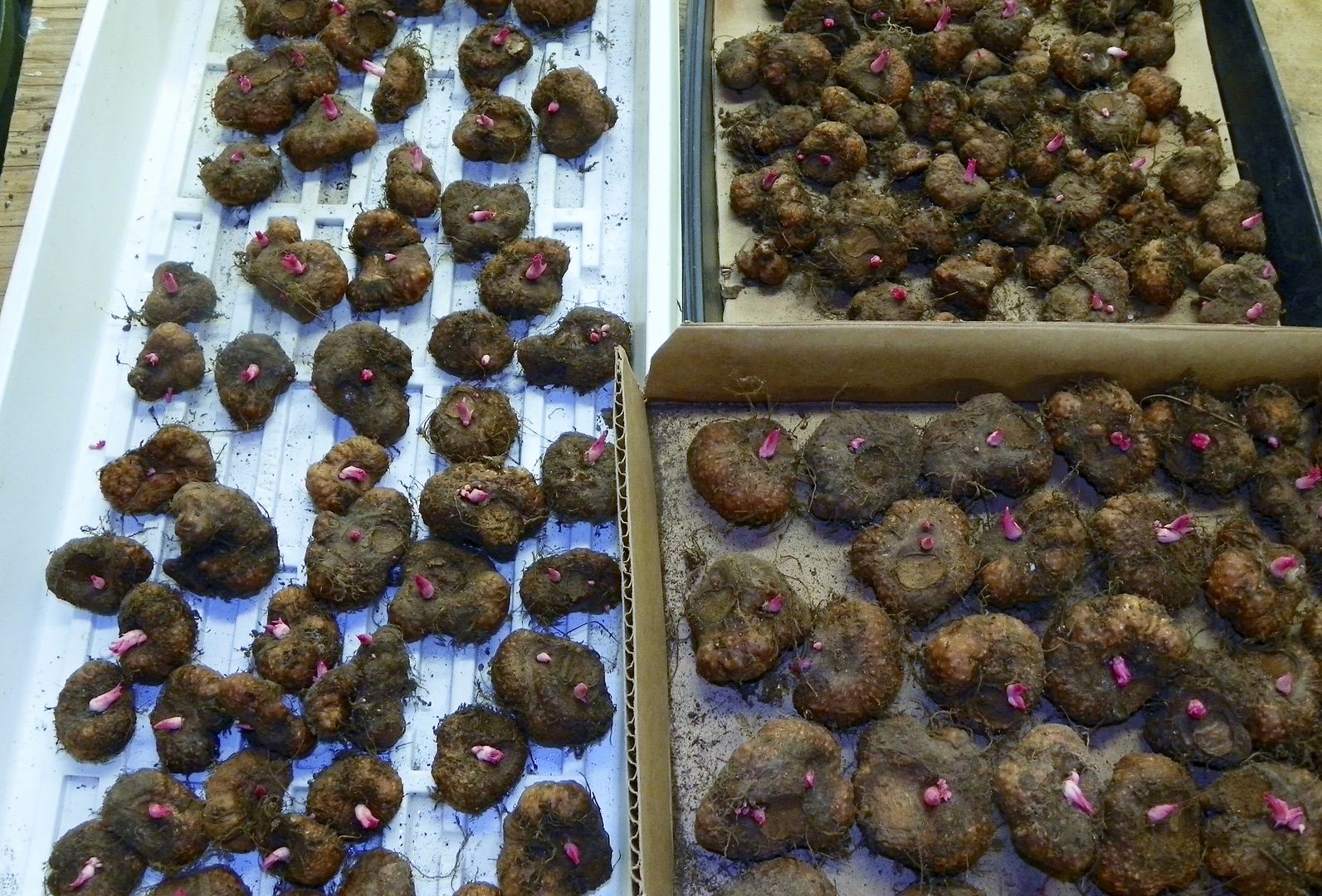
.jpg)

.jpg)
.jpg)